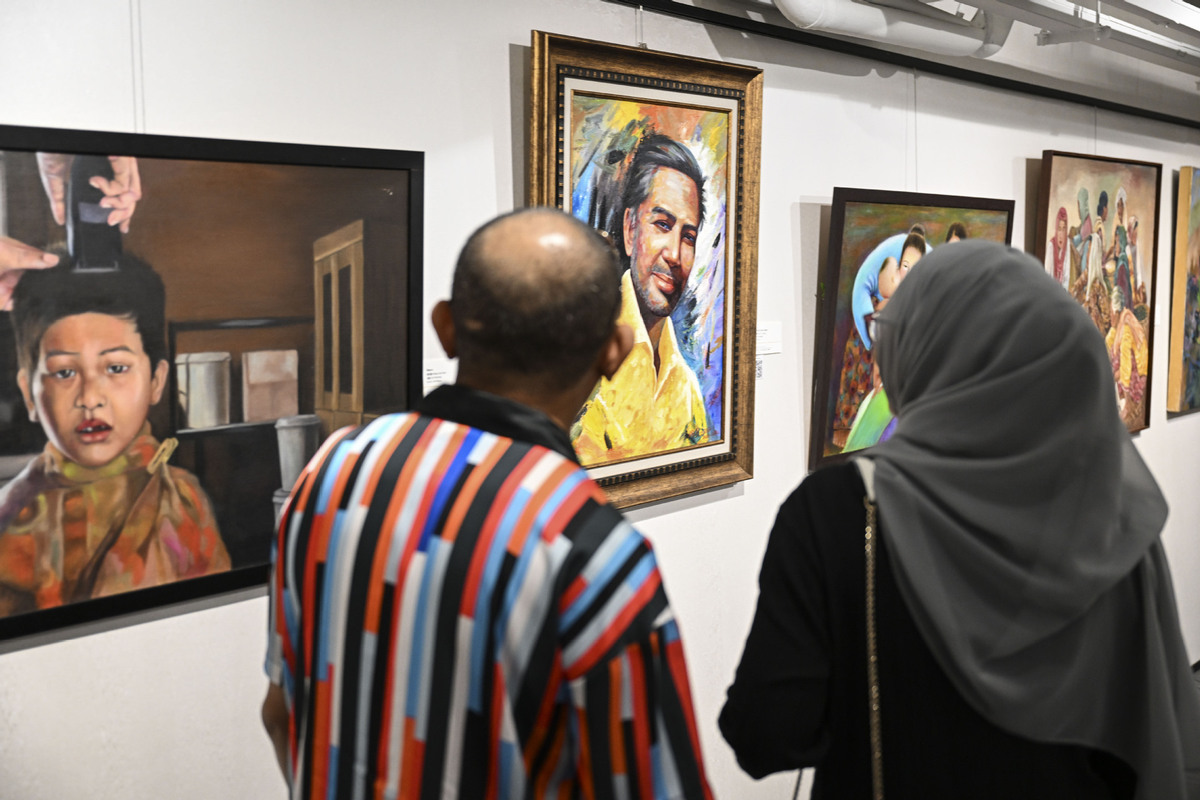

Promoting cultural exchanges and fostering better people-to-people ties motivated Malaysian artist Teh Chin Boon to create "Happiness", a close-up of a woman holding a Baba-Nyonya porcelain storage jar, or "kamcheng."
The vibrant red dress contrasts with the turquoise-colored jar, both featuring Chinese and other motifs, blending together to create a unique image that showcases the rich cultural heritage that artists like Teh are able to draw on when seeking inspiration.
The painting is one of over 70 pieces of art prepared by local renowned artists for the "Integration and Diversity" Invitational Exhibition of Contemporary Malaysian Figure Paintings of Eminent Artists launched on Tuesday at the China Cultural Center in Kuala Lumpur.
Teh explained that he seeks to bring to life the cultural exchanges that he has observed in Malaysia to a wide audience.
"Because for Chinese culture and Malay culture, (there are) actually a lot of things that we can actually feel and you can see. We are actually living in harmony. So like these paintings (are) actually, I think, a reminder for the diverse culture in Malaysia," Teh told Xinhua.
The Baba-Nyonya are the descendants of early immigrants from China with local people in Malaysia. They openly adopted local beliefs and practices, resulting in a unique culture. The jar holds special significance for its role as part of marriage ceremonies, in which the bride presents her prospective groom with the jar filled with sweets symbolizing happiness and good things in life.
In his remarks at the launch, Zhang Jiexin, director of the China Cultural Center in Kuala Lumpur, said Malaysia and China have a long history of cultural exchanges, with friendly interactions between the people of both countries.
Zhang said that China and Malaysia have a long history of friendly exchanges, dating back over 2,000 years to the Qin and Han dynasties.